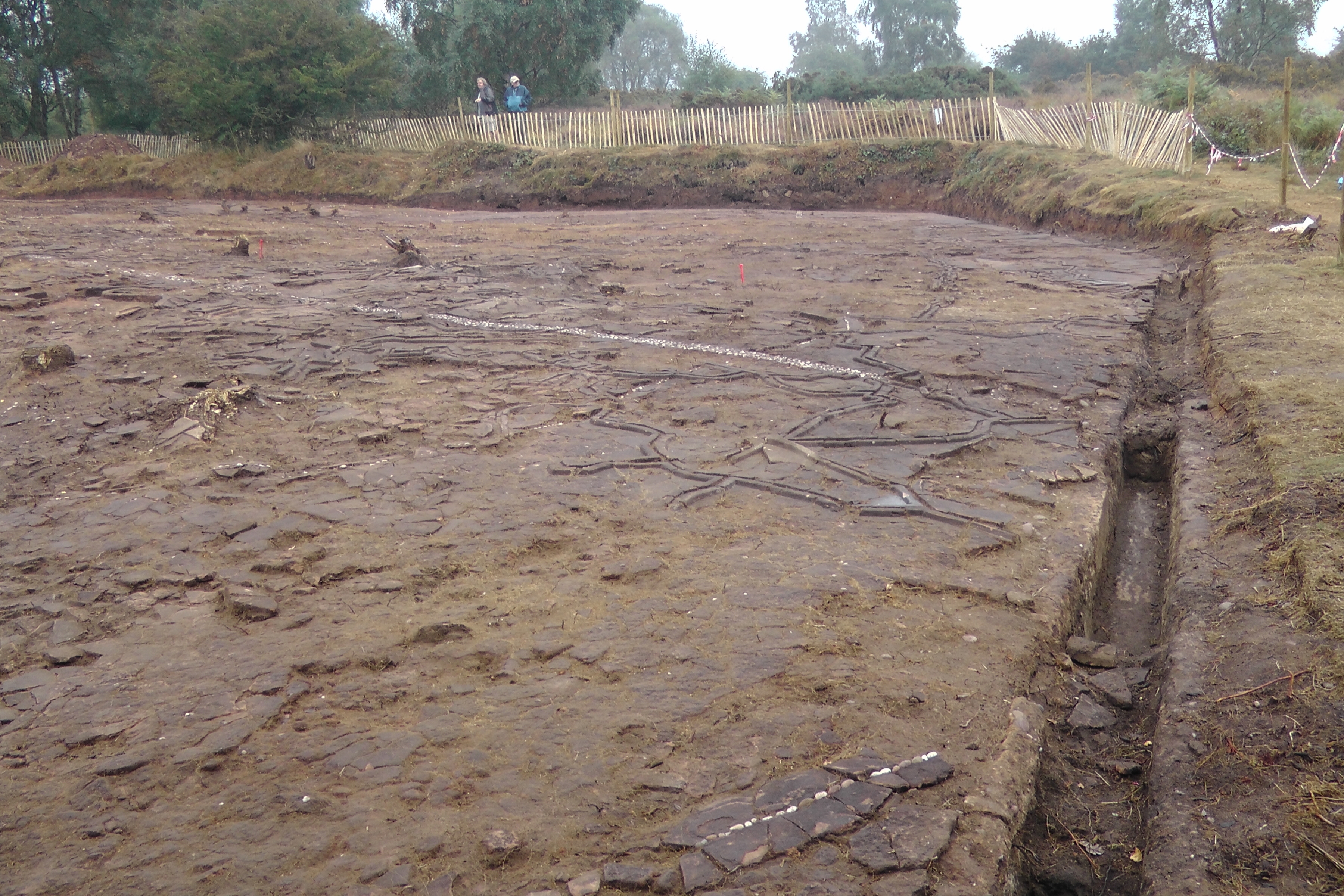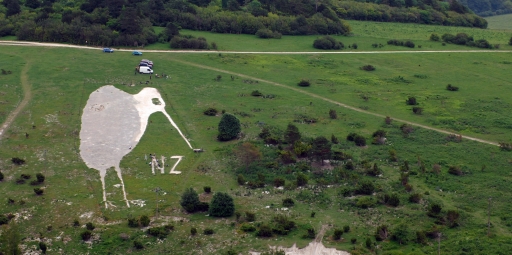Two monuments commemorating New Zealand’s First World War soldiers have been given protected conservation status in the UK to mark the Battle of Messines Centenary.
The Bulford Kiwi, a large white chalk figure near Stonehenge, has been safeguarded on the advice of conservationists Historic England, together with the remains of a rare model of the Messines battlefield at Cannock Chase in Staffordshire.
New Zealand welcomed the UK Government’s move, on the 100th anniversary of the Messines offensive in June 2017, to ‘list’ the sites as a legacy for future generations.
The chalk Kiwi stands 420 feet high (130m) and has a 150 feet (46m) long beak. It was created by New Zealand soldiers stationed at Bulford Camp in Wiltshire at the end of the Great War while they were waiting to go home. It commemorates the lives lost and sacrifices made in the conflict.
Remains of the second monument, known as the Terrain Model of Messines, survive at Cannock Chase in Staffordshire.
 The Terrain Model of Messines: Pebbles represent the Messines to Ploegstreet road and contour lines, while trenches are shown in concrete (Photo © WYG/NML)
The Terrain Model of Messines: Pebbles represent the Messines to Ploegstreet road and contour lines, while trenches are shown in concrete (Photo © WYG/NML)
Created by the New Zealand Rifle Brigade to celebrate the victory at Messines in June 1917, this was an accurate scale model of the battlefield, also used to train new recruits at a nearby camp.
It was constructed by German prisoners-of-war using soil, concrete, bricks and pebbles to capture every detail of the Flanders town, surrounding farms and natural features as they were on the night before the battle began.
The Allies detonated 19 mines at the start of their attack, dramatically altering the landscape of Messines ridge.
Roger Bowdler, Director of Listing at Historic England said: “These two monuments pay tribute to the bravery of New Zealand’s fighting forces in the First World War and we are delighted that they are now being protected for the future.
“The Bulford Kiwi was cut into the chalk at the end of the war by Kiwi soldiers themselves, to mark the presence of their forces in England, and their achievements at the front. It is an incredibly touching sight, and a moving tribute to men who lost their lives far from home.”
Roger Bowdler continued: “The taking of the Messines ridge was one of the war’s most stirring attacks, and this model lay-out remains as testimony to the planning which made possible the victory. Like so much of our historic environment, these lasting reminders enable us to connect with lives and events from the past that made us who we are as a nation. One hundred years on, it is right to remember New Zealand’s valour.”
Aerial view of archaeologists excavating the Terrain Model of Messines (Photo © WYG/NML)
The Messines model became a popular tourist attraction following the First World War, but was later neglected and lost.
Now recently excavated, studied and recorded as the only known example of its type, there are plans to mark it as part of a heritage trail. The site has been covered to protect it from damage or erosion.
Sir Jerry Mateparae, New Zealand High Commissioner to the UK said: “It’s fantastic to see Historic England protecting two very significant sites of huge importance for New Zealand. The special connections that were forged 100 years ago, with communities in the UK where New Zealanders trained, are still strong today and it’s moving to see these sites protected for generations to come.”
Read more here in Centenary News about the Battle of Messines and New Zealand’s commemorations in Belgium; also Britain & Ireland hold joint Messines tribute.
Information & images supplied by Historic England (Photos © WYG/NML)
Posted by: CN Editorial Team
